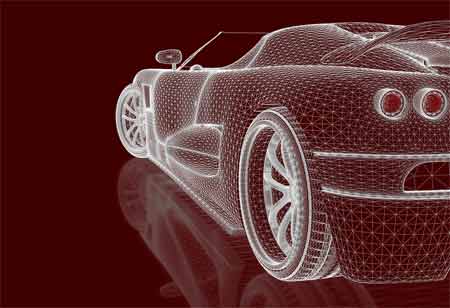THANK YOU FOR SUBSCRIBING
THANK YOU FOR SUBSCRIBING
Be first to read the latest tech news, Industry Leader's Insights, and CIO interviews of medium and large enterprises exclusively from Auto Tech Outlook

By
Auto Tech Outlook | Monday, June 17, 2024
Stay ahead of the industry with exclusive feature stories on the top companies, expert insights and the latest news delivered straight to your inbox. Subscribe today.
The Asia-Pacific automotive sector is enhancing innovation through Human Factors testing, addressing challenges like user diversity, aging population, and autonomous vehicles through methods like driver observation and anthropometric surveys.
FREMONT, CA: The automotive sector in the Asia-Pacific (APAC) region is experiencing significant growth, marked by a strong emphasis on innovation and technological advancements. However, amidst the proliferation of automation and driver assistance systems, it's imperative to recognize the pivotal role of the human operator. This underscores the importance of Human Factors (HF) testing. This critical process ensures the development of safe, comfortable, and user-friendly vehicles for the diverse population in the APAC region.
Human Factors Engineering (HFE), or ergonomics, incorporates human capabilities and limitations into the design process. In automotive testing, HFE focuses on understanding how drivers and passengers interact with the vehicle. This involves consideration of physical, cognitive, social, and emotional factors, particularly in the APAC region.
Physically, the anthropometry of APAC populations (body size and proportions) is critical. Controls, seating, and legroom must accommodate more users than traditional Western benchmarks. Cognitively, assessing mental workload, attention, and decision-making abilities ensures that information displays and controls are straightforward and intuitive, minimizing distractions and errors. Socially and emotionally, cultural considerations such as driving habits and expectations are crucial. For example, APAC's in-car entertainment systems may need to cater to multi-generational passengers.
Several essential methods are used in APAC for HFE testing. Driver observation studies involve researchers observing real-world driving behavior to identify challenges faced by drivers in different APAC traffic conditions. Simulator testing in controlled environments replicates driving scenarios to assess driver interaction with vehicle features and responses to various situations. Eye-tracking technology monitors eye movements to understand how drivers scan the environment and prioritize information within the car's interface. Anthropometric surveys provide data on APAC populations' body size, proportions, and strength to optimize seating positions, control placement, and accessibility.
Assessing driver and passenger comfort and usability involves subjective evaluations, where participants provide feedback on comfort levels, ease of use of controls, and overall satisfaction with the vehicle's interior design. Physiological measures, such as biometric data like heart rate and skin conductance, indicate stress levels experienced by drivers in different situations. Posture analysis using seating pressure mats and motion capture technology helps assess long-term comfort and potential fatigue factors.
The APAC region presents unique challenges and opportunities for HFE testing. The growing diversity of the APAC population necessitates considering the specific needs of users from various countries with varying physiques and driving styles. An aging population in some APAC countries requires features catering to elderly drivers and passengers, such as easier ingress/egress and larger control fonts. Additionally, technological advancements, such as the rise of autonomous vehicles, demand a focus on human-machine interaction (HMI) and ensuring smooth transitions between manual and automated driving modes.
By integrating HF testing throughout the development phases, automotive manufacturers can engineer vehicles that showcase technological prowess and prioritize safety, comfort, and user-friendliness for the diverse spectrum of drivers and passengers in the region. This human-centric approach is a cornerstone for securing the future success of APAC's automotive industry.
 Copyright © 2025 AutoTech Outlook. All Rights Reserved | Privacy Policy | Subscribe | Sitemap | About us | Feedback Policy | Editorial Policy
Copyright © 2025 AutoTech Outlook. All Rights Reserved | Privacy Policy | Subscribe | Sitemap | About us | Feedback Policy | Editorial Policy 



